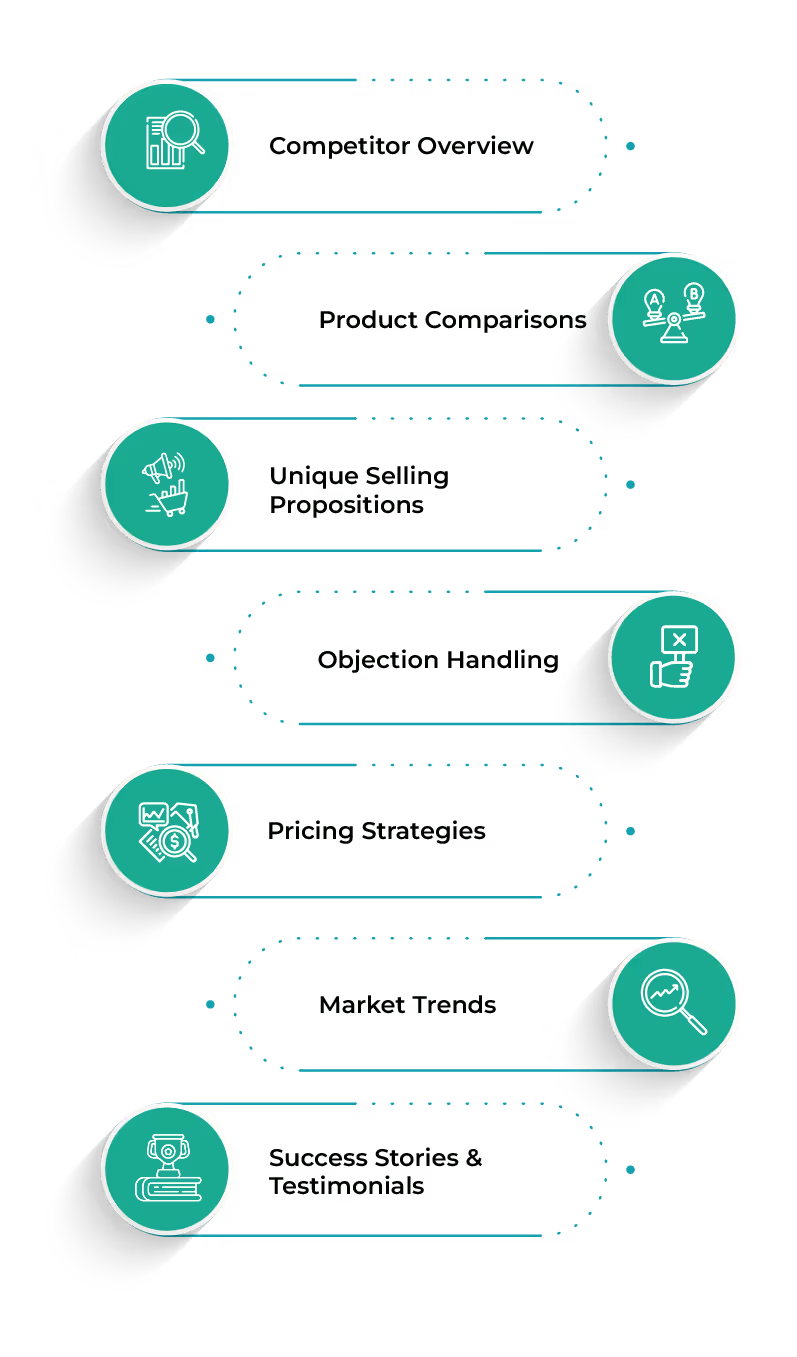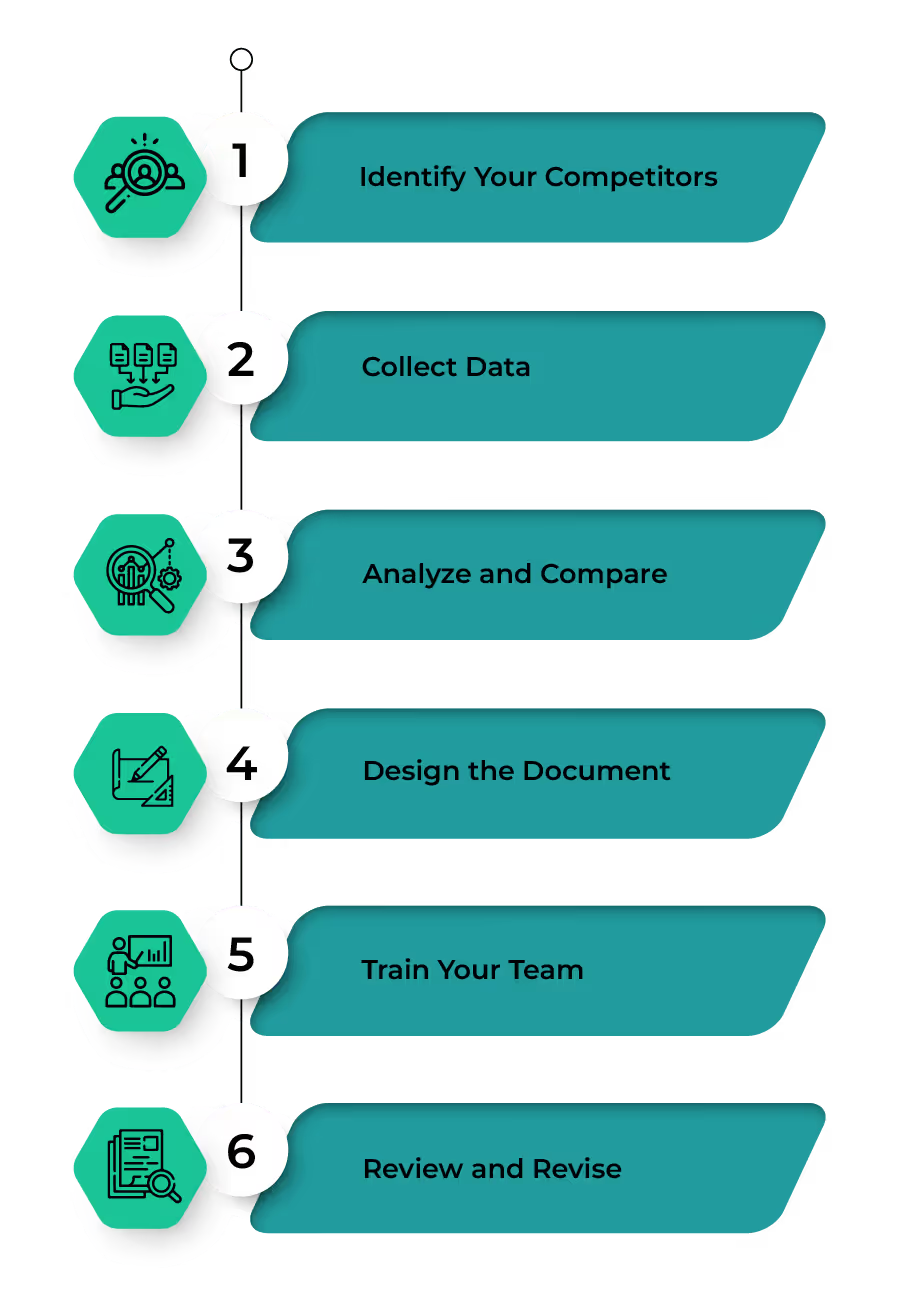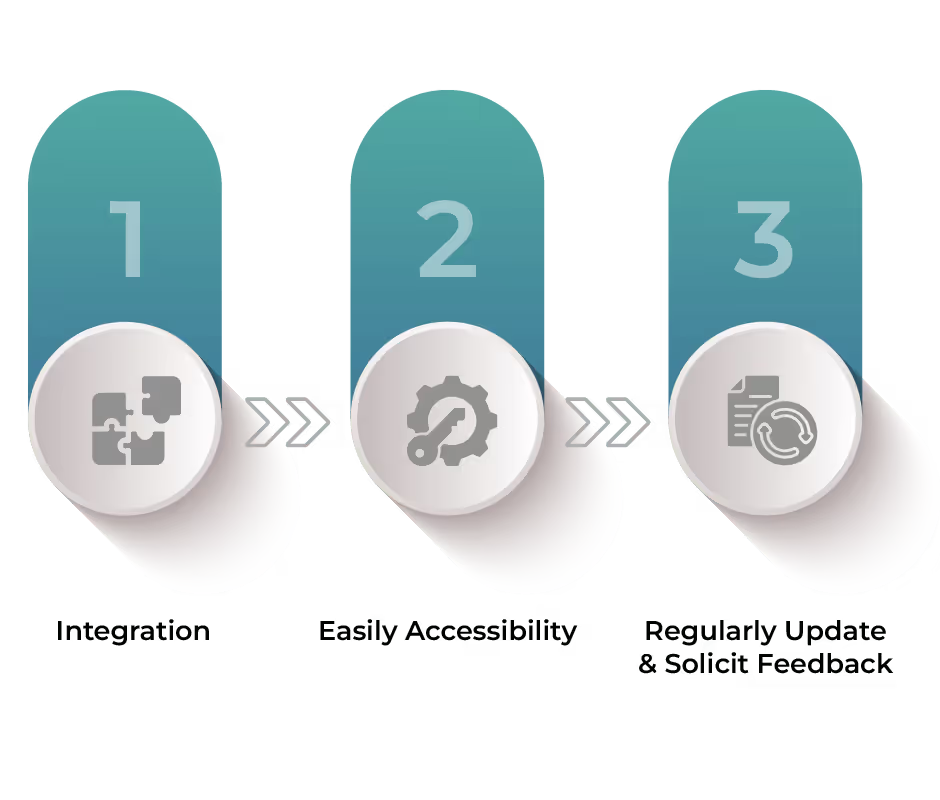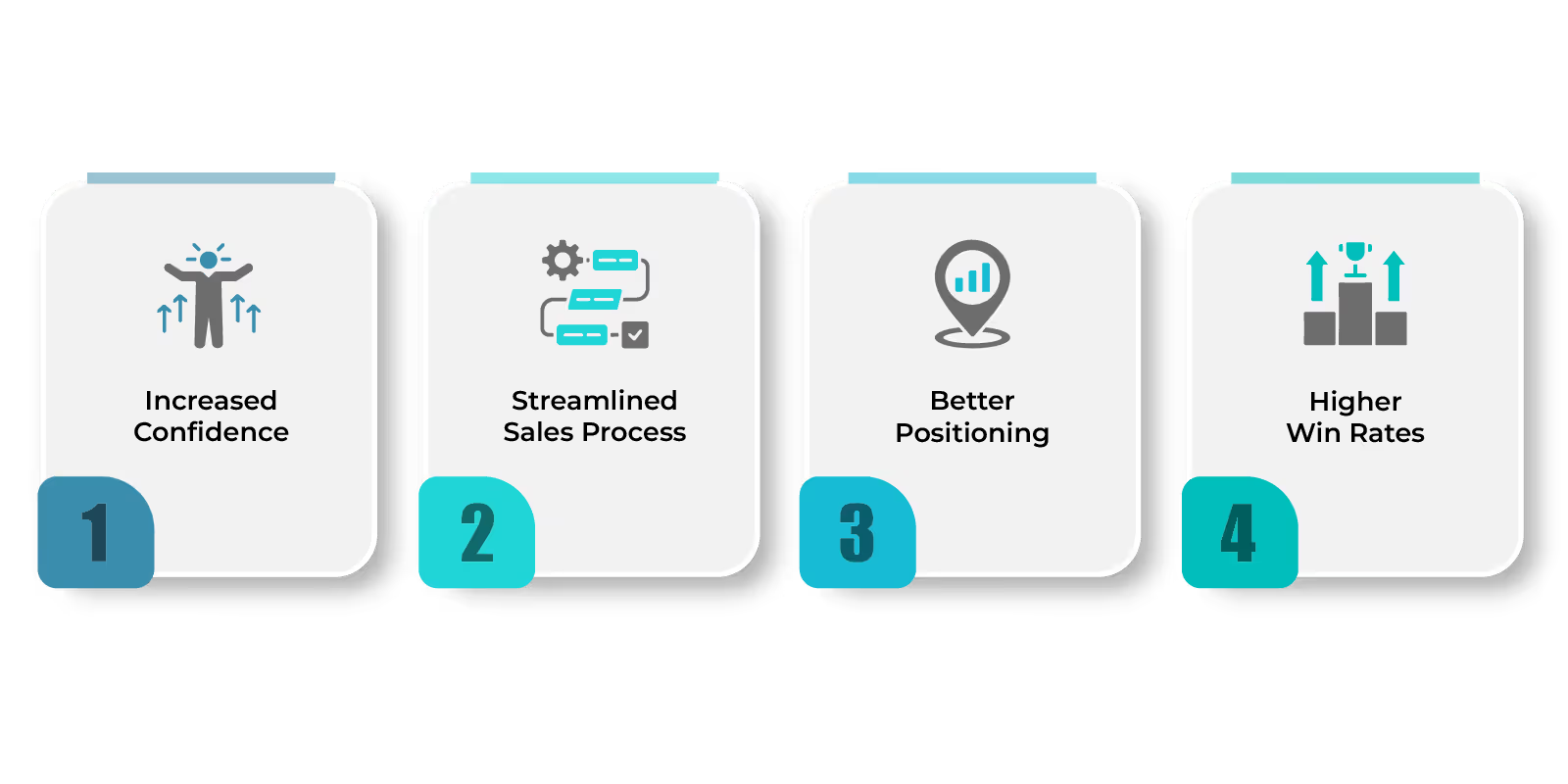
Blog
How to Build Sales Battlecards for your Sales Process
December 6, 2023


Key Insights
Nobody can deny this: Sales is fast-paced and fiercely competitive.
Possessing accurate knowledge and insights about your competition can significantly tilt the scales in your favor.
That's where sales battlecards come into play, serving as a crucial tool in any sales professional's arsenal.
Whether you're pitching to a potential client or strategizing for an upcoming campaign, a well-crafted battlecard provides a competitive edge that can lead to more effective engagements and successful outcomes.
Let's dive deeper into what sales battlecards are, explore their key components, identify different types, and learn how to craft one that can transform your sales approach.
Who Creates Battle Cards?
Battle cards are usually crafted by the marketing or sales enablement team, with inputs from various quarters such as sales veterans, product managers, and market research analysts.
These teams collaborate to gather accurate and up-to-date information that can give sales representatives a competitive edge.
But these days, you will find that a lot of other teams chip in as well with suggestions!

What is a Sales Battlecard?
Imagine stepping into a sales meeting armed with a secret weapon
—a cheat sheet that not only tells you who you’re up against but also gives you the exact tactics to win over your client.
That's essentially what a battle card is!
Battle cards are quick-reference guides used by sales teams to understand and effectively counter the offerings of competitors during sales pitches.
They contain key information on competitors’ products, strengths, weaknesses, strategies, and more.
Who Creates Battle Cards?
Battle cards are usually crafted by the marketing or sales enablement team, with inputs from various quarters such as sales veterans, product managers, and market research analysts.
These teams collaborate to gather accurate and up-to-date information that can give sales representatives a competitive edge.
But these days, you will find that a lot of other teams chip in as well with suggestions!
What is the Purpose of a Battlecard?
The core purpose of a battlecard is to empower sales teams with actionable insights and data-driven strategies to enhance their sales pitches.
They serve as a quick reference guide to handle objections, highlight unique selling propositions, and directly compare features and benefits against main competitors.
In essence, battlecards help salespeople to sell smarter and close deals faster.
Key Components of a Sales Battlecard

A well-rounded sales battlecard includes several critical elements that together provide a comprehensive competitive analysis:
- Competitor Overview: Includes foundational information such as company size, key personnel, market presence, and historical data.
- Product Comparisons: A detailed, feature-by-feature comparison against competitors’ offerings, highlighting both strengths and potential gaps.
- Unique Selling Propositions (USPs): Clearly articulated points that differentiate your product from the competition, often tied to customer benefits that directly address their needs and pain points.
- Objection Handling: A strategic collection of potential customer objections and pre-formulated responses to these concerns, based on real data and customer feedback.
- Pricing Strategies: Comparative analysis of pricing models and discounts across competitors, providing a guideline on how to position your product for better market penetration.
- Market Trends: Analysis of emerging trends that affect buying behaviors and market dynamics, which can help in forecasting future demands and adjusting strategies.
- Success Stories and Testimonials: Real-life examples where your product has successfully met or exceeded customer expectations, which can be used to build trust and credibility during sales conversations.
What are the Different Types of Sales Battlecards?

Depending on the target audience and specific sales goals, battlecards can be customized into four broad formats:
- Product Battlecards: These are tailored to specific products or services, focusing on detailed comparisons and USPs.
- Objection Handling Battlecards: Designed to help sales teams manage and overcome customer objections effectively.
- Market Landscape Battlecards: Provide a broad overview of the market, highlighting opportunities and threats within the industry.
- Campaign-Specific Battlecards: Created for particular marketing or sales campaigns, aligning team efforts towards a common goal with consistent messaging and strategies.
Steps for Creating a Competitive Battlecard

Crafting an effective battlecard requires a systematic approach to ensure it delivers value during sales engagements:
- Identify Your Competitors: Start by clearly defining who your real competitors are, focusing on those in the same market segment.
- Collect Data: Gather information through market research, sales feedback, customer interactions, and third-party sources to build a robust database.
- Analyze and Compare: Perform a SWOT analysis (Strengths, Weaknesses, Opportunities, Threats) to understand your position relative to your competitors.
- Design the Document: Organize the information in a user-friendly format that allows quick access to key insights. Use visuals like charts and graphs for easier comprehension.
- Train Your Team: Educate your sales team on how to effectively utilize the battlecard, with regular training sessions and updates.
- Review and Revise: Continuously update the battlecard as new information comes in and as the market evolves.
How do you Drive Adoption of Battlecards?

Driving adoption of battlecards involves a mix of training, accessibility, and regular updates. You can actually do this in 3 easy steps:
First, start by integrating them into sales training programs and demonstrating their impact through role-plays and simulations.
Second, make sure they are easily accessible, perhaps through a digital sales enablement platform.
Third, keep them regularly updated and solicit feedback from the sales team to ensure they remain relevant and useful.
Voila, there you have it: Driving the use of battlecards in 3 simple steps!
Tips for Creating Effective Sales Battlecards
Creating standout battlecards means focusing on clarity, relevance, and usability.
Here’s a checklist if you’re stuck:
- Keep it concise: Use bullet points and clear headings.
- Focus on differentiators: Highlight what sets your product apart.
- Use visual aids: Graphs and charts can make data easier to understand at a glance.
- Regular updates: Keep the information current to maintain reliability.
- Tailor by audience: Consider different versions for different customer segments or regions.
How to Use a Battlecard
Using a battlecard effectively is all about timing and context.
Familiarize yourself with the content before a sales call or meeting. During the discussion, use the information to confidently counter objections and answer questions about competitors.
The goal is not to recite the battlecard, but to use the insights it provides to guide the conversation towards your strengths.
Benefits of Using a Sales Battlecard

Battlecards are not just about knowing your enemy; they're about knowing yourself and your product even better. Benefits include:
- Increased confidence: Sales reps can handle objections more effectively.
- Streamlined sales process: Quick access to information speeds up the sales cycle.
- Better positioning: Detailed competitor insights help in strategically positioning your product.
- Higher win rates: Being prepared often leads to more closed deals.
Conclusion:
Sales battlecards are not merely informational documents—they are strategic tools that can dramatically improve your sales outcomes.
By equipping your team with detailed, up-to-date battlecards, you can enhance their confidence and effectiveness in dealing with clients, ultimately leading to increased sales success and customer satisfaction.
In the competitive arena of sales, being armed with a comprehensive battlecard is not just an advantage; it's a necessity.
ReKennect : Stay ahead of the curve!
Subscribe to our bi-weekly newsletter packed with latest trends and insights on incentives.
Thank you! Your submission has been received!
Oops! Something went wrong while submitting the form.
Your data is in safe hands. Check out our Privacy policy for more info















